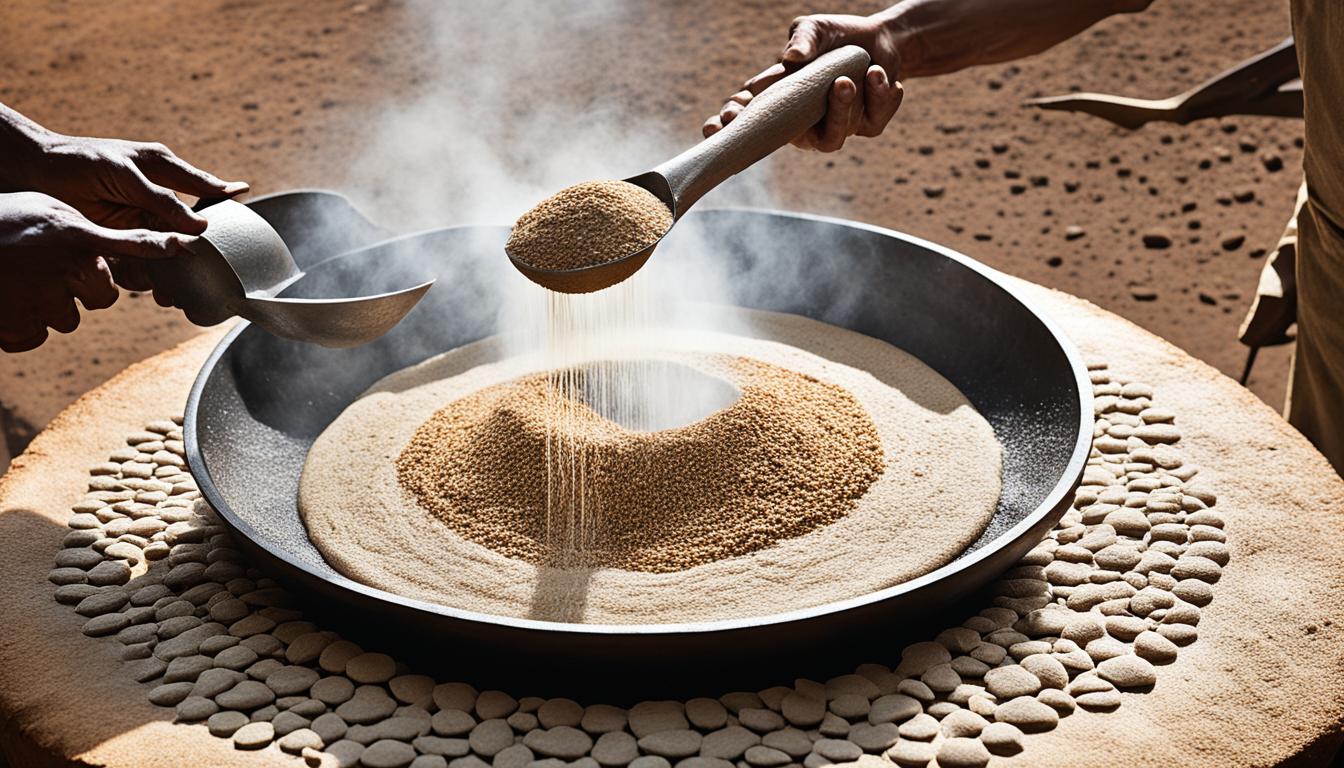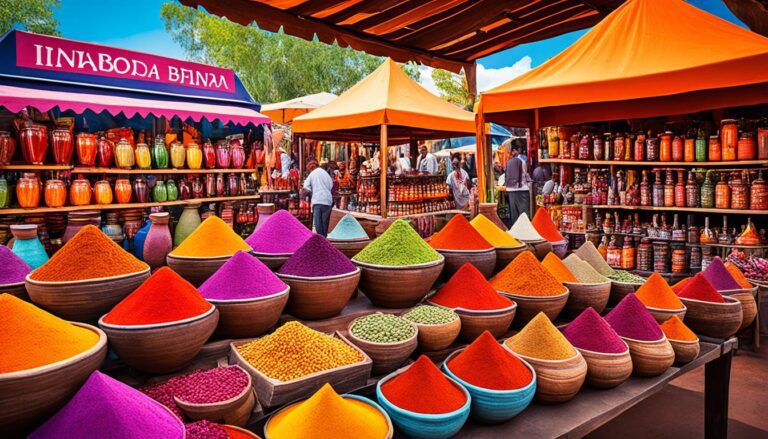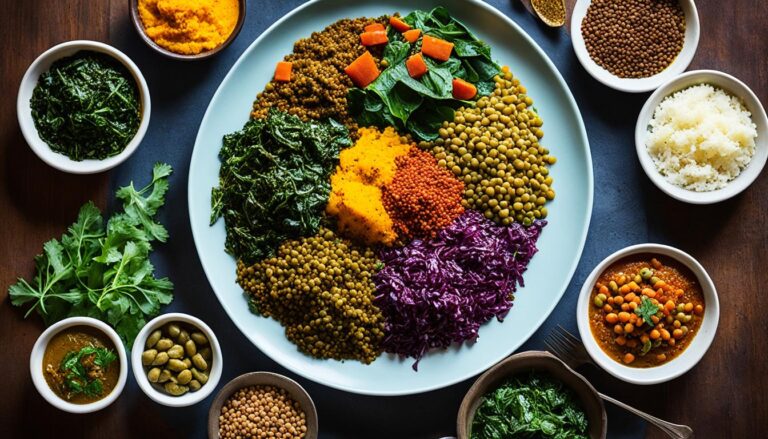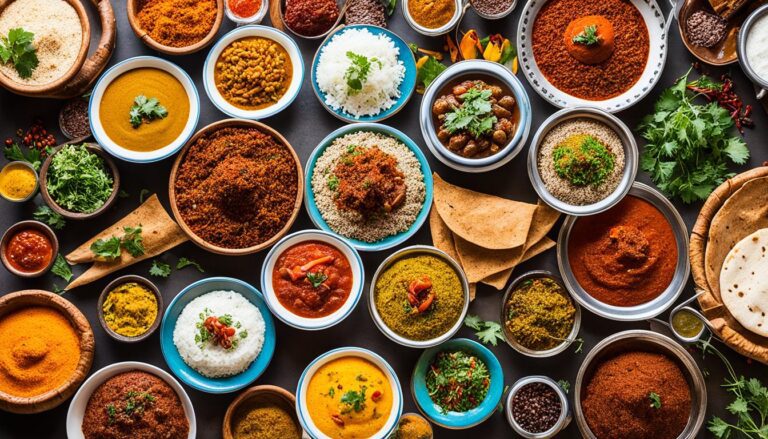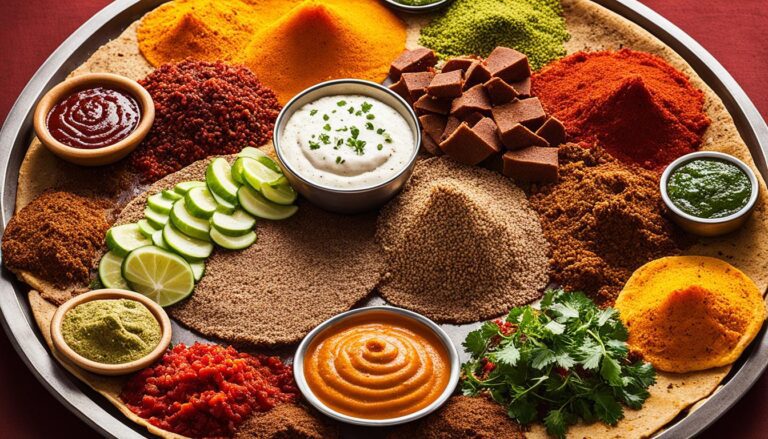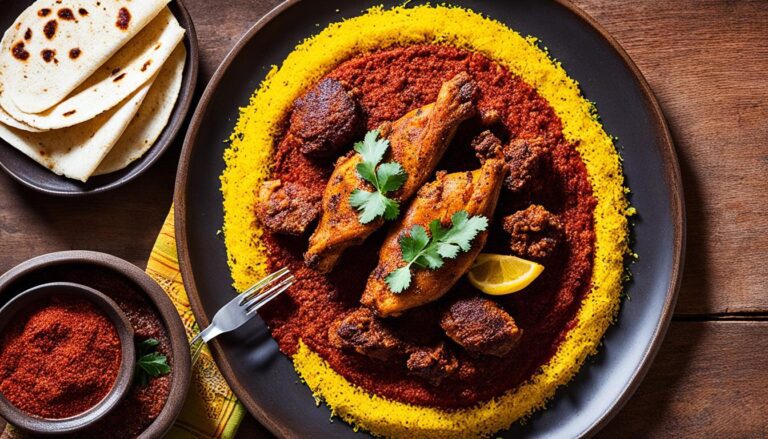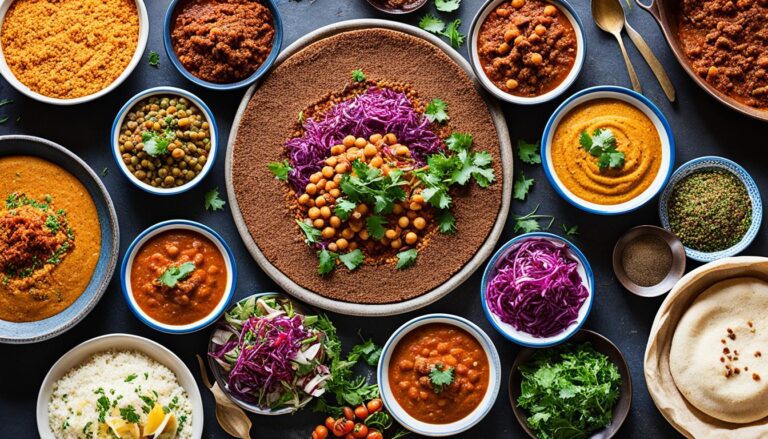How Is Injera Made in Ethiopia
Let’s explore how injera, a much-loved Ethiopian bread, is made. Injera is a flatbread unique to Ethiopia. It’s made from teff flour. A special fermentation process gives it a distinct taste and texture.
The main ingredient for injera is teff flour, ground from teff grains. This grain is special because of its many nutrients, earning it the name “super grain”. The bread’s spongy feel and mild sourness come from fermenting a mix of the flour and water.
In Ethiopia, injera is a very important food. It’s often eaten with different stews and vegetables. Many people love it for its unique qualities around the world, not just in Ethiopia.
Key Takeaways:
- Injera is a traditional Ethiopian bread made from teff flour and a fermented mixture.
- Teff flour, known as a “super grain,” is ground from the grains of the teff plant.
- The fermentation process gives injera its spongy texture and mild sour taste.
- Injera is a staple in Ethiopian cuisine and is typically enjoyed with a variety of stews and vegetables.
- Its unique qualities and cultural significance have made injera popular both in Ethiopia and around the world.
The Ingredients and Preparation Process of Injera
Injera is a traditional bread from Ethiopia. It’s made with a simple recipe using teff flour and water. Teff flour comes from the teff plant, a nutritious grain grown in Ethiopia’s highlands. A starter from previously fermented mix kicks off the fermentation process.
The batter of injera bread must undergo fermentation. This step is key for its special texture and flavor. The starter introduces live cultures that start the fermentation. It takes a few days and makes the bread slightly sour. The batter forms bubbles, giving the finished bread its spongy structure.
After fermenting, the batter is ready for cooking. It’s poured on a hot cooking surface. Traditionally, a “mitad,” a round clay griddle, was used. Now, people often use non-stick pans or electric stoves. The batter is spread thinly and cooked until the edges lift and it becomes porous.
The smell of teff flour as it cooks is mouth-watering. This makes everyone eager to eat the hot, fresh injera. The final product is a stack of round flatbreads, which go well with many Ethiopian dishes.
The Role of Injera in Ethiopian Culture
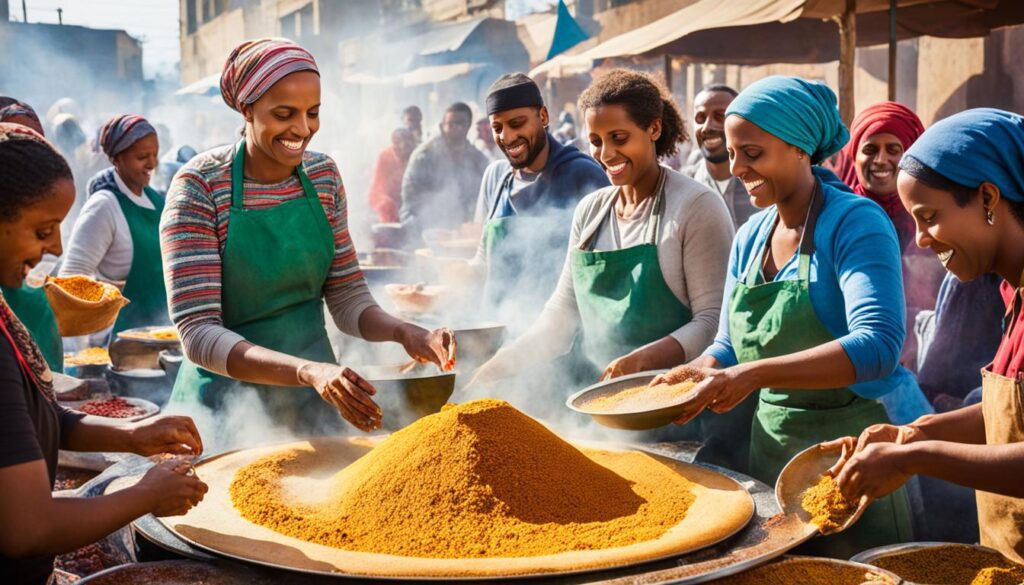
In Ethiopia, Injera is more than food; it’s a key part of life and culture. It brings people together and stands for unity.
At events and get-togethers, Injera is shared on big plates. This shows the value of unity and the joy of eating together. It helps create strong bonds between people.
Injera plays many important parts in Ethiopian life. It’s not just for eating with, but a sign of friendship. Having Injera together means celebrating the love of food and cultural ties.
Injera is also part of special rituals and beliefs. It’s given as a gift to wish good luck, and used in baptisms. This shows its strong connection to spiritual and important life events.
Injera is more than a meal; it’s a symbol of Ethiopian values and ways of life.
Varieties and Uses of Injera
Injera is a special type of Ethiopian bread that goes with many foods. It’s not just any bread; it’s like a perfect side to dishes like spicy chicken stew and beef stew. These rich stews balance well with injera’s spongy, tangy nature, making the meal a delight.
During times of religious fasting without meat, injera shines even more. It joins forces with dishes such as lentil stew, providing a full and tasty meal. This shows how versatile and friendly injera is with different tastes and cooking styles.
The type of teff flour chosen affects how the injera turns out. Whether it’s white, red, or dark brown teff, each kind brings its unique taste and look. So, every time you eat injera, you may find a new surprise in its color and flavor.
Injera is a must-have in Ethiopian homes, enjoyed daily around tables. It has found its place not only within Ethiopia but also in many countries where Ethiopian food is loved. Injera is more than a bread; it’s a symbol of sharing food together. It shows up in both big celebrations and ordinary meals, making each gathering feel real and special.
Making Injera: Traditional Methods and Modern Alternatives
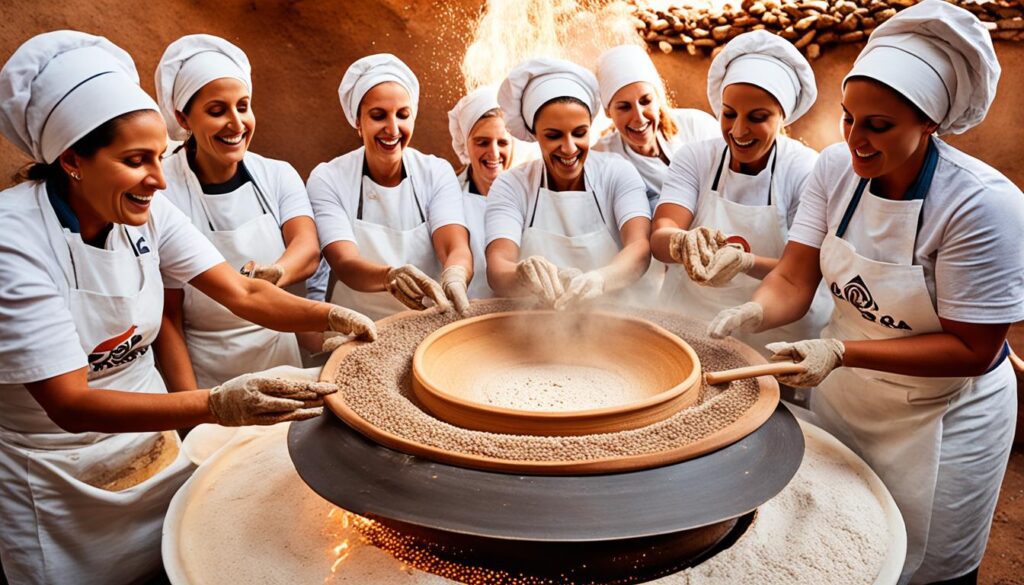
Injera can be made in both traditional and new ways. We’ll look at how this special bread from Ethiopia is made. Let’s dive into the different ways of baking injera.
The Traditional Method: Using a Traditional Griddle (Mitad)
The batter for injera is poured onto a mitad in the old way. A mitad is a round griddle often made of clay. It evenly heats the batter, making the injera cook just right. The injera turns into a porous and spongy bread thanks to this.
Modern Alternatives: Electric Stoves and Non-stick Frying Pans
Today, there are special electric stoves for making injera. They have a flat, hot metal surface to cook the batter well. These are great for people who like modern methods or don’t have a traditional griddle.
If you don’t have an electric stove, a non-stick frying pan works well too. It’s smooth, so the injera won’t stick when cooking. This makes baking injera easy and simple without special tools.
In the end, the method you choose depends on what you have and what you like. Both the traditional and modern ways make tasty injera. So, you can enjoy making and eating Ethiopian food at home.
The Global Impact of Injera
Injera is more than just bread; it’s a cultural icon from Ethiopia. Now, it’s loved around the world. This Ethiopian staple is found in many countries with Ethiopian communities. In these places, Ethiopian restaurants proudly serve it. It is a food that unites people globally.
Injera is unique in taste and touch, which is why people love it. Its distinctive taste draws people from different cultures. Now, it is a hit beyond Ethiopia, making dining experiences more diverse and interesting. Truly, it has become a global favorite.
The availability of teff flour has made injera more accessible in the United States. This is the main ingredient in making injera. People curious about Ethiopian food and Ethiopian immigrants can easily get teff flour. Now, they can make and enjoy injera at home, boosting the dish’s popularity worldwide. It is a key reason for the dish’s takeoff in the global food scene.
Injera has become popular globally, showcasing its versatility and cultural importance. Now, it’s not just food; it symbolizes Ethiopian heritage around the globe. It brings together people of all backgrounds, creating a shared love for exotic yet delicious food.
Conclusion
Injera is more than just bread. It stands for Ethiopian culture and food. This flatbread is loved worldwide for its special qualities. It’s not just food but a way to bring people closer during special events.
More and more, people are falling in love with Ethiopian meals. Injera is at the heart of this. It’s celebrated both in restaurants and at home, showing off Ethiopia’s food traditions.
We welcome you to try injera. Exploring Ethiopian food is like diving into a world of color and taste. It’s a journey that shows how food can bring us all together. So, let’s share a meal of injera and find joy in our global food culture.

